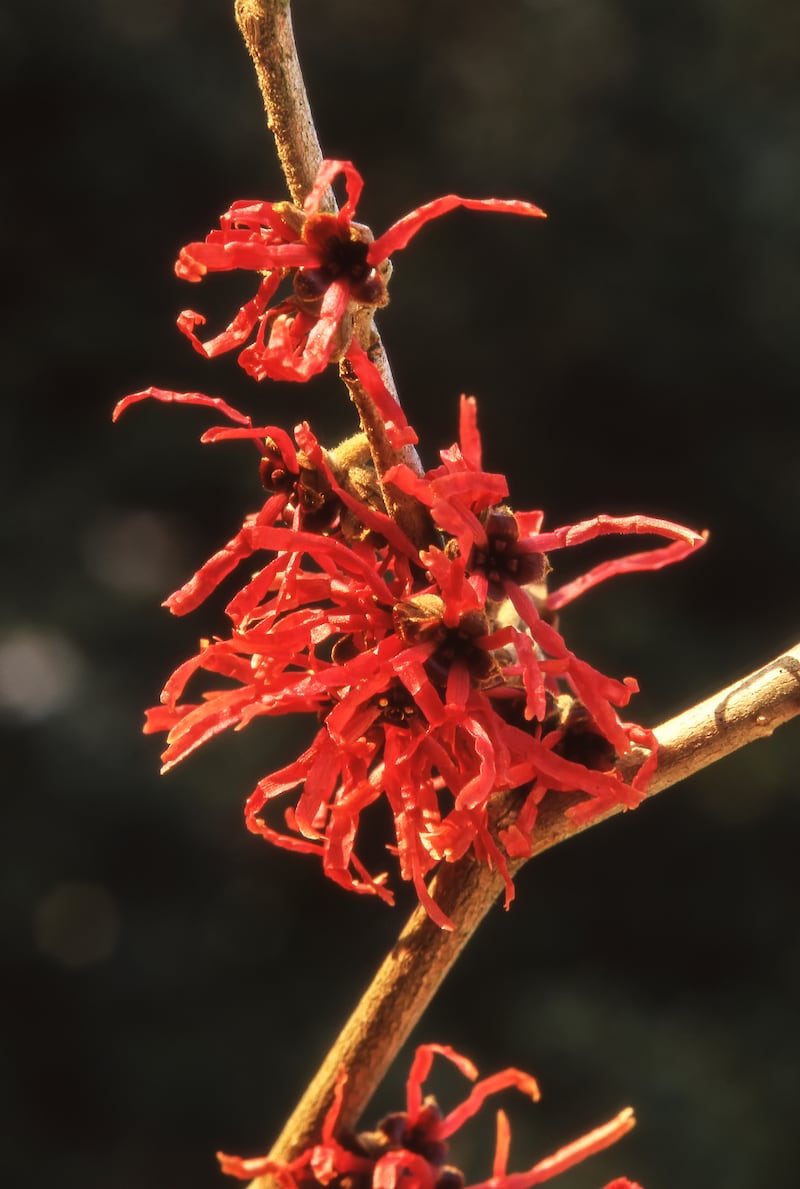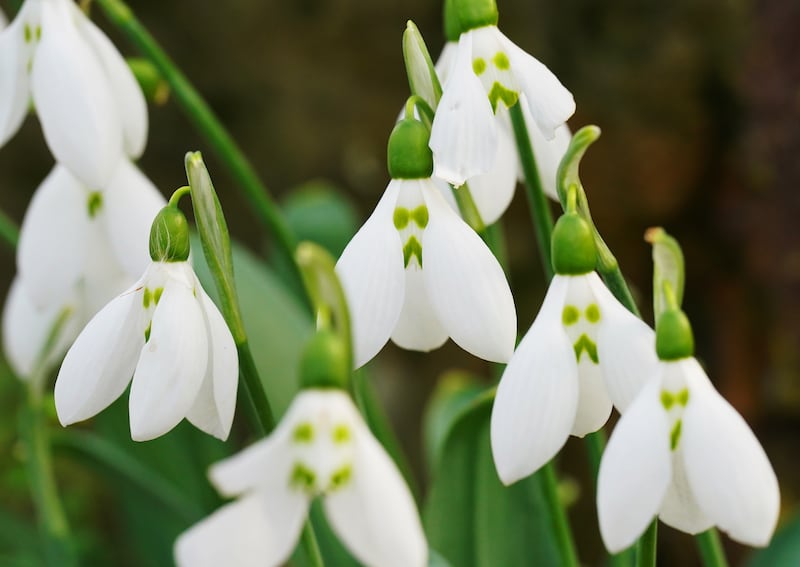Living deep in the Irish countryside as I do, surrounded by a centuries-old patchwork of farm fields, hedgerows and leafy pockets of ancient native woodland, a clear winter night sky is a thing of profound beauty. It is filled with the otherworldly shimmer of a host of constellations, familiar to me from my childhood.
Orion’s Belt, with its three supergiant stars Alnitak, Alnilam and Mintaka, neatly aligned in a row, is easy to spot. So too is the Plough, its seven stars roughly forming the shape of a saucepan, and pointing the way towards the North Star, Polaris, situated just above the North Pole. Nearby is the W-shaped star-rich constellation that is Cassiopeia, and Castor and Pollux, the twin half-brothers of Greek mythology. And of course the moon, the earth’s natural satellite, neither a planet nor a star, but the brightest and largest of them all.
Sadly, for those living in cities or large towns, it’s increasingly rare to get the opportunity to enjoy this celestial spectacle in full, its beauty often dimmed to the point of near-invisibility by the light pollution that’s become so much a part of the 21st-century urban landscape. Putting the magic and majesty of a starry winter night sky aside, the myriad of complex ways in which artificial light pollution or ALAN (artificial light at night) also affects the natural world by disrupting the ebb and flow of its ecosystems, from the migratory patterns of birds to the life cycles of invertebrates, is only beginning to be properly understood.
According to one study, for example, it’s estimated that up to a third of all flying insects attracted to street lights will die as a result. That long list includes beetles, lacewings, aphids, crane-flies, bees, moths, butterflies, midges, hoverflies, damselflies and dragonflies, many of whose populations are in decline.
READ MORE
Public lighting aside, inappropriate garden lighting can have the very same detrimental effect on insect life, whether through death or injury from hot light bulbs or by leaving flying insects painfully exposed to their natural predators. According to a detailed report by the conservation organisation Buglife (buglife.org.uk) that same artificial light can also negatively impact the life cycles of these insect populations in other ways, affecting their flight, navigation, vision, migration, dispersal, egg-laying, mating and feeding as well as their ability to use camouflage to protect themselves. It’s a similar story for freshwater insects, whose natural habitats include garden ponds, rivers and wet ditches, and whose delicately timed life cycles are naturally attuned to very subtle seasonal changes in natural light levels.
Worryingly, inappropriately bright garden lighting has also been found to interfere with the important process of night pollination typically carried out by moths, dramatically disrupting their ability to visually identify suitable flowers (moths see colours best at low light intensity).
Not all are drawn by the bright glare of high-watt light bulbs. Some species of invertebrates commonly found in Irish gardens, and which are key to the healthy functioning of their ecosystems, such as earthworms, earwigs, cockroaches and woodlice, are instinctively repelled by bright light.
A garden’s insect life aside, inappropriate garden lighting can have a negative impact on its birdlife as well as other wildlife including hedgehogs, bats and frogs. Owls, for example, will avoid highly lit areas during their night-time hunts, while common garden species such as blackbirds and robins start into morning song earlier and extend their feeding patterns. Some species of tit were also found to start laying their eggs earlier in the season when nesting in highly lit areas. Many rarer, slower-flying species of bats will avoid brightly lit areas while those faster-flying, opportunistic species that are drawn to them then leave themselves vulnerable to predators. Bats’ hibernatory patterns can also be disrupted while other nocturnal animals such as hedgehogs will also tend to avoid brightly lit areas, fragmenting their natural habitats.
Plants have also been found to be affected by ALAN, which can artificially boost their rate of photosynthesis to the point of exhaustion, and result in changes to when their leaves come into bud in spring and when they fall in autumn. Recent research also suggests that when trees are continuously exposed to artificial light, they’re more vulnerable to the effects of air pollution and drought.

This myriad of different species aside, it’s worth pointing out that we humans are yet another that’s been adversely impacted by ALAN. Putting aside the irritation and sleeplessness that results from having to endure inappropriately high levels of night light caused by a glaring street lamp, poorly considered floodlighting or an overly illuminated neighbouring garden (all examples of what’s also known as “light trespass”), our own natural circadian rhythms have also evolved over thousands of years in synchronicity with the seasonal fluctuations of natural light. Put simply, it’s ingrained in our DNA. The result is that too much exposure to too much artificial light can affect our levels of melatonin, with negative consequences for our sleep patterns, moods and immune system.
As garden owners, we can all play a thoughtful part in minimising these effects by carefully considering the ways in which we illuminate our outdoor spaces. How? A good start is to follow that always-useful credo “less is more”. No garden, after all, needs to be lit up like a Christmas tree 24/7. Where possible, also avoid using uplighting or floodlighting, and position garden lights as low as possible, with their bulbs pointed downwards as much as possible and with hoods or cowls over them to minimise flare and light spill. Where bright lighting is being installed for security purposes, consider using motion sensors or timers to minimise the time that they’re on (one to two minutes is usually enough), as well as dimmers to limit their intensity and mitigate their impact. The Royal Horticultural Society (RHS) also recommends using warmer-coloured lighting (warm white, yellow or amber) rather than those with a blue or cold white component that are much more problematic for wildlife. By following these tips, we can lighten our footprint upon this planet in the very best possible sense of the word.
This week in the garden

Flowering plants are thin on the ground at this time of year, which is why the shrubby, deciduous witch hazels (Hamamelis), which produce their intensely perfumed clusters of spidery bloom on bare branches in January and February, are such a joy. Very, very slowly forming a large, spreading shrub, these long-lived, woody deciduous plants are perfect for a woodland edge, a mixed border or for container growing in a large pot. Recommended varieties include the yellow-flowered Hamamelis “Pallida” and the burnt-orange Hamamelis “Jelena”. Witch hazels like a cool, moist but free-draining humus-rich soil and a sheltered spot in full sun or light shade.
Given the predicted shortage of stock of seed potatoes as a result of last summer’s bad weather, it’s best to order them now while stocks of favourite varieties are still relatively high. Given the record rainfall of last year and the increased risk of blight, it’s also a good idea to focus on vigorous disease-resistant varieties. Examples include the delicious early varieties “Vitabella”, “Vitanoire” (purple-skinned and purple-fleshed) and “Alouette”. Recommended stockists include mrmiddleton.com; quickcrop.ie and fruithillfarm.com
Dates for your diary

Wednesday January 17th (7.30pm-9pm), “Snowdrops & Other Flowers”, a Zoom talk by Paul Smyth, head gardener of RHSI Bellefield, the former garden of the designer, plantsperson and galanthophile the late Angela Jupe, on behalf of the RHSI, see rhsi.ie
Thursday January 18th (8pm), Northridge House, St Luke’s Castle Rd, Mahon, Co Cork, “Containing the Unconventional: The joys of container gardening and what can be achieved with a little imagination and inspiration”, a lecture by British head gardener Ben Pope on behalf of Cork Alpine/Hardy Plants Society. All welcome, visitors €10.
Saturday January 27th, Ballykealey House, Ballon, Co Carlow, Snowdrop Gala 2024 by guest speakers Steve Edney of No Name Nursery in Sandwich, Kent and Michael Dreisvogt of Park Härle Arboretum in Bonn, Germany, plus plant stalls from a hand-chosen selection of specialist nurseries. Tickets from €110, see altamontplants.digitickets.co.uk or email hesterforde@gmail.com
- Sign up for push alerts and have the best news, analysis and comment delivered directly to your phone
- Find The Irish Times on WhatsApp and stay up to date
- Our In The News podcast is now published daily – Find the latest episode here















